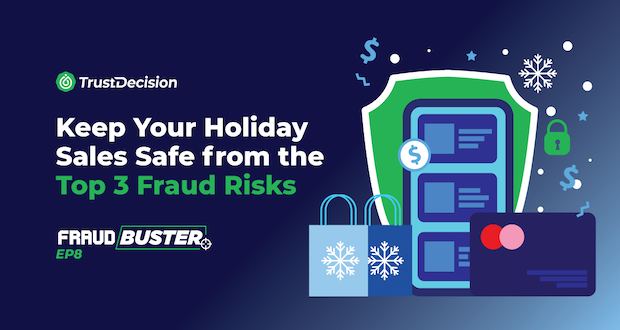Introduction
In today’s interconnected digital landscape, businesses face an ever-growing threat from bot attacks. These automated, malicious activities carried out by bots can have a significant impact on organizations. Let’s delve into what bot attacks are and explore strategies to defend against them.
Understanding Bot Attacks
1. Defining Bot Attacks
Bot attacks refer to a range of automated actions performed by software robots (bots) with varying intentions. These bots can be programmed to execute tasks such as scraping data, launching distributed denial-of-service (DDoS) attacks, or attempting fraudulent activities. The motivations behind bot attacks include:
- Data Theft: Bots may infiltrate systems to steal sensitive information, such as customer data, intellectual property, or financial records.
- Fraud: Some bots engage in fraudulent activities, such as creating fake accounts, generating fake reviews, or manipulating online advertising.
- Disruption: DDoS bots flood servers with traffic, causing service disruptions and impacting user experience.
2. Types of Bots
Let’s explore the different types of bots and the risks they pose:
- Web Scrapers:
- Purpose: Web scrapers collect data from websites, often for competitive intelligence or market research.
- Risk: While legitimate web scrapers serve useful purposes, malicious ones can overload servers, leading to performance issues.
- Credential Stuffing Bots:
- Purpose: These bots attempt to log in to various platforms using stolen credentials (e.g., leaked passwords).
- Risk: Credential stuffing attacks can compromise user accounts, leading to unauthorized access and potential data breaches.
- DDoS Bots:
- Purpose: DDoS (Distributed Denial-of-Service) bots flood servers with traffic, causing service disruptions.
- Risk: Organizations may face downtime, loss of revenue, and damage to their reputation.
- Chatbots:
- Purpose: Legitimate chatbots enhance customer service, but malicious chatbots can spread misinformation or engage in phishing.
- Risk: Misleading chatbots can harm brand reputation and deceive users.
Real-Life Examples
Let’s look at a couple of real-life examples:
- Credential Stuffing Attack on a Retail Website:
- A retail website experienced a surge in failed login attempts. Investigation revealed a credential stuffing attack.
- The company implemented rate limiting and CAPTCHA challenges, reducing the impact of future attacks.
- DDoS Attack on an E-Commerce Platform:
- During a flash sale, an e-commerce platform faced a massive influx of traffic from DDoS bots.
- The platform quickly scaled its infrastructure and deployed DDoS mitigation services to maintain uptime.
In conclusion, understanding bot attacks and proactively defending against them is crucial for safeguarding your business and maintaining trust with customers. Stay vigilant, adapt to emerging threats, and prioritize bot security to stay one step ahead.
The Impact of Bot Attacks
1. Reputation Damage
A travel booking platform faced a reputation crisis when bots flooded their review section with fabricated negative reviews. Genuine travelers hesitated to book due to the perceived poor service quality, impacting the company’s brand image.
Bot attacks pose a significant threat to a company's reputation. Firstly, the proliferation of fake reviews can severely affect its credibility. These automated attacks can generate phony positive or negative reviews, misleading potential customers who rely on such reviews to make buying decisions. The fraudulent reviews result in diminished trust in the brand.
Secondly, bot attacks can also manipulate social media platforms. By spreading misinformation, amplifying negative sentiments, or even impersonating legitimate users, bots can cause substantial damage to a company's reputation. These occurrences can raise doubts in the minds of consumers and stakeholders, damaging the company's credibility.
Additionally, bots can lead to data breaches. If bots successfully infiltrate a company's system and steal customer data, the breach can lead to a severe loss of trust. Customers entrust their personal information to companies with the expectation that their data will be secure. Any breach of this trust can lead to long-lasting reputational damage.
For instance, a real-world example demonstrates the potential damage caused by bots. A travel booking platform faced a severe reputation crisis when bots bombarded their review section with fabricated negative reviews. Genuine travelers, misled by the artificial reviews, hesitated to book, incorrectly assuming poor service quality. This attack significantly impacted the company's brand image, revealing the destructive potential of bot attacks.
2. Financial Losses
Bot attacks not only damage a company's reputation but also inflict severe financial losses. In the realm of e-commerce, bots are capable of scraping critical business data, such as pricing information, inventory levels, and product details. This harvested data can then fall into the hands of competitors or unauthorized resellers, who may capitalize on it to undercut prices. This ultimately leads to lost sales and a serious dip in revenue.
Ad fraud presents another significant financial impact of bot attacks. Malicious bots generate counterfeit clicks on online ads, squandering advertising budgets without producing genuine leads or conversions. Such fraudulent activities waste financial resources and hinder actual marketing progress.
In the financial services sector, bot attacks often engage in credential stuffing, compromising user accounts and conducting illicit transactions. Such fraudulent actions lead to considerable financial losses for both the businesses and their clients.
To illustrate these points, consider the example of an online retailer that steeply lost revenue due to a bot attack. The bot scraped the retailer's product pricing data, enabling competitors to adjust their prices accordingly. This move resulted in loss of sales and significantly eroded the retailer's profit margins.
Further, bot attacks increase operational costs for companies. DDoS bot attacks, for example, flood servers with traffic, causing service disruptions that require investment in additional server capacity and mitigation solutions. Moreover, the implementation and maintenance of robust bot detection mechanisms necessitate resources and continuous monitoring. Therefore, bot attacks lead to increased operational costs, adding another layer of financial stress on the affected business.
Defending Against Bot Attacks
1. Bot Detection and Prevention
CAPTCHAs and Behavioral Analysis
- CAPTCHAs: Implementing CAPTCHAs (Completely Automated Public Turing test to tell Computers and Humans Apart) helps differentiate between human users and bots. CAPTCHAs challenge users to perform tasks that are easy for humans but difficult for automated scripts.
- Behavioral Analysis: Analyzing user behavior can reveal patterns indicative of bot activity. For example, rapid form submissions, unusual navigation paths, or excessive clicks may signal automated behavior.
IP Filtering and Rate Limiting
- IP Filtering: Maintain a list of known bot IPs and block them at the network level. Regularly update this list based on threat intelligence.
- Rate Limiting: Limit the number of requests from a single IP address or user agent within a specific time frame. Throttling prevents abuse and reduces the impact of bot attacks.
Machine Learning-Based Solutions
- Anomaly Detection: Machine learning algorithms can identify abnormal patterns in user behavior. Train models to recognize bot-like activity based on historical data.
- Predictive Models: Predictive models can assess the likelihood of a request being from a bot. These models adapt over time as new attack techniques emerge.
2. Monitoring and Response
Continuous Monitoring
- Real-Time Monitoring: Monitor network traffic, server logs, and user interactions continuously. Detect anomalies promptly.
- Alerts and Notifications: Set up alerts for suspicious activity. When a potential bot attack is detected, notify the security team.
Incident Response Procedures
- Isolate the Bot: If a bot attack is confirmed, isolate the affected system or service to prevent further damage.
- Forensics: Conduct forensics to understand the attack vector, identify compromised accounts, and assess the impact.
- Mitigation: Implement countermeasures (e.g., blocking IPs, adjusting WAF rules) to mitigate the attack.
3. Collaboration and Industry Trends
Collaborate Across Organizations
- Information Sharing: Share threat intelligence with other organizations. Collaborate to identify emerging bot attack techniques.
- Industry Forums: Participate in industry forums and working groups focused on bot security. Learn from peers and contribute to best practices.
Emerging Trends
- AI-Driven Defenses: Artificial intelligence and machine learning are increasingly used to detect and prevent bot attacks. These technologies adapt to evolving threats.
- Device Fingerprint: Detecting anomalies by identifying unique device IDs to strengthen fraud protection, prevent unauthorized access and combat Bot-Generated content.
In summary, defending against bot attacks requires a multi-layered approach, proactive monitoring, and collaboration. Stay informed about industry trends and adapt your defenses to stay ahead of malicious bots.
Conclusion
In the ever-evolving digital landscape, understanding and defending against bot attacks is paramount for organizations. Organizations must take proactive steps to safeguard their assets:
- Invest in Defense Mechanisms: Allocate resources to robust bot detection and prevention systems. AI-driven defenses and device fingerprinting play pivotal roles.
- Collaborate Across Industries: Share threat intelligence and collaborate with peers. Industry forums and working groups foster knowledge exchange.
- Stay Informed: Keep up with emerging trends. AI, behavioral analysis, and device fingerprint evolve rapidly—staying informed is essential.
By prioritizing bot security, organizations can protect their financial stability, maintain customer trust, and uphold content integrity. Let’s work together to build resilient defenses against bot attacks.














